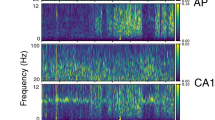Abstract
Background
Arousals caused by external stimuli during human sleep have been studied for most of the sensorial systems. It could be shown that a pure nasal trigeminal stimulus leads to arousals during sleep. The frequency of arousals increases dependent on the stimulus concentration. The aim of the study was to evaluate the influence of different stimulus durations on arousal frequency during different sleep stages.
Methods
Ten young healthy volunteers with 20 nights of polysomnography were included in the study. Pure trigeminal stimulation with both different concentrations of CO2 (0, 10, 20, 40 % v/v) and different stimulus durations (1, 3, 5, and 10 s) were applied during different sleep stages to the volunteers using an olfactometer. The application was performed during different sleep stages (light sleep, deep sleep, REM sleep).
Results
The number of arousals increased with rising stimulus duration and stimulus concentration during each sleep stage.
Conclusion
Trigeminal stimuli during sleep led to arousals in dose- and time-dependent manner.






Similar content being viewed by others
References
Stuck BA, Frey S, Freiburg C, Hormann K, Zahnert T, Hummel T (2006) Chemosensory event-related potentials in relation to side of stimulation, age, sex, and stimulus concentration. Clin Neurophysiol 117(6):1367–1375
Schredl M, Atanasova D, Hormann K, Maurer JT, Hummel T, Stuck BA (2009) Information processing during sleep: the effect of olfactory stimuli on dream content and dream emotions. J Sleep Res 18(3):285–290
Heiser C, Baja J, Lenz F, Sommer JU, Hörmann K, Herr RM, Stuck BA (2012) Effects of an artificial smoke on arousals during human sleep. Chemosens Percept 5(3–4):274–279
Stuck BA, Baja J, Lenz F, Herr RM, Heiser C (2011) Co-stimulation with an olfactory stimulus increases arousal responses to trigeminal stimulation. Neuroscience 176:442–446
Gottfried JA (2006) Smell: central nervous processing. Adv Otorhinolaryngol 6:344–69
Coates EL (2001) Olfactory CO(2) chemoreceptors. Respir Physiol 129(1–2):219–229
Skramlik E (1925) On the localization of sensation in the lower senses. Z Sinnesphysiologie 56:69–140
Kobal G, Van Toller S, Hummel T (1989) Is there directional smelling? Experientia 45(2):130–132
Wysocki CJ, Green BJ, Malia TP (1992) Monorhinal stimulation as a method for differentiating between thresholds for irritation and odor. Chem Senses 17:722–723
Wysocki CJ, Cowart BJ, Varga E (1997) Nasal-trigeminal sensitivity in normal aging and clinical populations. Chem Senses 22:826
Stuck BA, Stieber K, Frey S, Freiburg C, Hormann K, Maurer JT, Hummel T (2007) Arousal responses to olfactory or trigeminal stimulation during sleep. Sleep 30(4):506–510
Ackerman BH, Kasbekar N (1997) Disturbances of taste and smell induced by drugs. Pharmacotherapy 17(3):482–496
Hummel T, Sekinger B, Wolf SR, Pauli E, Kobal G (1997) 'Sniffin' sticks': olfactory performance assessed by the combined testing of odor identification, odor discrimination and olfactory threshold. Chem Senses 22(1):39–52
Kobal G, Klimek L, Wolfensberger M, Gudziol H, Temmel A, Owen CM, Seeber H, Pauli E, Hummel T (2000) Multicenter investigation of 1,036 subjects using a standardized method for the assessment of olfactory function combining tests of odor identification, odor discrimination, and olfactory thresholds. Eur Arch Otorhinolaryngol 257(4):205–211
Stuck BA, Weitz H, Hormann K, Maurer JT, Hummel T (2006) Chemosensory event-related potentials during sleep—a pilot study. Neurosci Lett 406(3):222–226
Rechtschaffen A, Kales A (1968) A manual of standardized technology, techniques and scoring system for sleep stages of human sleep. Brain Information Service/Brain Research Institute, Los Angeles
Iber C, Ancoli-Israel S, Chessonn A, Quan SF (2007) In the AASM Manual for the scoring of sleep and associated events: rules, terminology and technical specifications. Journal (Issue)
Drewes AM, Nielsen KD, Arendt-Nielsen L, Birket-Smith L, Hansen LM (1997) The effect of cutaneous and deep pain on the electroencephalogram during sleep—an experimental study. Sleep 20(8):632–640
Lavigne G, Zucconi M, Castronovo C, Manzini C, Marchettini P, Smirne S (2000) Sleep arousal response to experimental thermal stimulation during sleep in human subjects free of pain and sleep problems. Pain 84(2–3):283–290
Kryger MS, CM (1992) Pain and distress at night. Sleep solutions 51–20
Mahowald MW, Mahowald ML, Bundlie SR, Ytterberg SR (1989) Sleep fragmentation in rheumatoid arthritis. Arthritis Rheum 32(8):974–983
Tuladhar R, Harding R, Adamson TM, Horne RS (2005) Heart rate responses to non-arousing trigeminal stimulation in infants: effects of sleep position, sleep state and postnatal age. Early Hum Dev 81(8):673–681
Nordin S, Lotsch J, Murphy C, Hummel T, Kobal G (2003) Circadian rhythm and desensitization in chemosensory event-related potentials in response to odorous and painful stimuli. Psychophysiology 40(4):612–619
Carskadon MA, Herz RS (2004) Minimal olfactory perception during sleep: why odor alarms will not work for humans. Sleep 27(3):402–405
Neville KRH, LB (2004) The synaptic organization of the brain. Journal (Issue)
Steriade MJEGM, DA (1997) The thalamus during brain disconnection. Journal (Issue):536–549
Murakami M, Kashiwadani H, Kirino Y, Mori K (2005) State-dependent sensory gating in olfactory cortex. Neuron 46(2):285–296
Acknowledgments
The study was supported by a grant from the German Research Foundation (Deutsche Forschungsgemeinschaft STU 488/2-1).
Conflict of interest
The authors declare that they have no conflict of interest.
Author information
Authors and Affiliations
Corresponding author
Rights and permissions
About this article
Cite this article
Heiser, C., Baja, J., Lenz, F. et al. Trigeminal induced arousals during human sleep. Sleep Breath 19, 553–560 (2015). https://doi.org/10.1007/s11325-014-1046-1
Received:
Revised:
Accepted:
Published:
Issue Date:
DOI: https://doi.org/10.1007/s11325-014-1046-1




